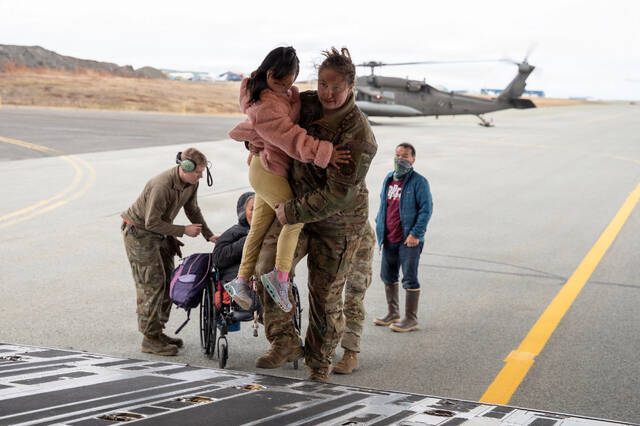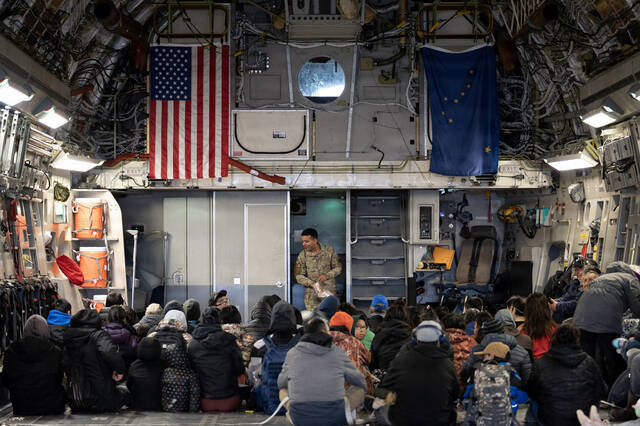Major Alaska storm damage could displace thousands for 18 months, governor warns
Thousands of Alaskans won’t be able to return home for at least 18 months after Typhoon Halong slammed remote villages along the state’s western coast last weekend, destroying the area’s infrastructure, Alaska Gov. Mike Dunleavy warned in an Oct. 17 letter to President Donald Trump.
Dunleavy, a Republican, asked the White House in the letter for a major disaster declaration that would allow federal funding for what’s expected to be a monthslong recovery effort from the storm.
Remnants of the typhoon, which originated in the northern Philippine Sea, brought 100 mph winds and damaging storm surges, with water levels reaching 8 feet above high tide in western Alaska beginning Oct. 8.
The storm pushed homes off their foundations, destroyed roads and downed communications lines in some of the most rural areas of the state, including the Alaska Native Villages of Kipnuk and Kwigillingok. The communities have a combined population of about 1,150 people
Rebuilding will be long and arduous. Alaska’s emergency management agency estimated that 90% of structures in Kipnuk were lost in the storm, and a third were destroyed in Kwingillingok. Power outages and a lack of clean water remain issues in those and other nearby communities.
“It is anticipated that more than 1,500 Alaskans will be evacuated to our major cities, many of whom will not be able to return to their communities and homes for upwards of 18 months,” Dunleavy wrote.
As crews work to clear out debris and get supplies to the remote region, they’ll be forced in a few short weeks to contend with Alaska’s bitter winter weather, including cold temperatures and potentially icy conditions.
Dunleavy suggested in his letter that “some damaged communities will not be viable to support winter occupancy,” in the harsh arctic climate.
Alaska Sens. Dan Sullivan and Lisa Murkowski urged Trump to approve Dunleavy’s disaster request in a separate Oct. 17 letter.
“With winter fast approaching, and transportation and broadband connectivity limited, there is an urgent need for federal aid to repair housing, restore utilities, and secure heating fuel before severe winter conditions set in,” they said.
USA TODAY reached out to the White House for comment.
The Alaska National Guard airlifted more than 600 people out of the battered region. Residents whose homes were destroyed evacuated to Bethel, the largest city in western Alaska. But shelters quickly filled up, requiring hundreds of people to be moved elsewhere. Survivors were taken to shelters in Anchorage and other cities that avoided the worst impacts of the storm.
One woman in Kwigillingok died in the storm, and two other people remain missing, the state’s emergency management agency said on Wednesday, Oct. 15.
Remove the ads from your TribLIVE reading experience but still support the journalists who create the content with TribLIVE Ad-Free.


